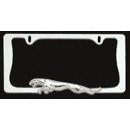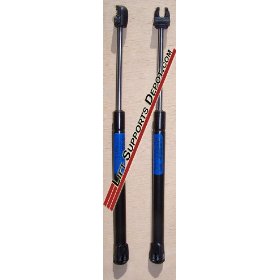 |

1982 Jaguar XJR5
|
More 1982 Jaguar Xjr5's
For Sale,
Parts,
Repairs,
How To Fix,
Manuals,
Online Store,
Videos,
Images,
Restorations,
Shows,
Events,
Auctions,
Classifieds,
Clubs,
News,
Blogs,
Forums,
Magazines,
Die Cast Models
|
|
| Address: Scotts Valley, CA | |
Exterior Color: White | |
| Interior Color: Black | |
Transmission: Auto | |
|
Contact Me...
|
|
|
1982 Jaguar XJR-5 IMSA GTP Chassis: 001 First XJR-5 built Driven by Bob Tullius and Bill Adams Restored and track ready Eligible for historic events worldwide This particular XJR-5, s/n 001, is the very first XJR-5 constructed. Initially track tested in June of 1982 at Summit Point Raceway, with further 8 hour tests at Mid-Ohio and Road America in July and August. The race debut for Jaguar, Group 44 and XJR-5/001 was August 22nd at the 1982 Pabst 500 at Road America. With Bob Tullius and Bill Adam driving, the car finished 3rd overall. During the 1983 GTP season Tullius, driving alone, again found himself on the podium, scoring a second place at Laguna Seca. The car was held as a spare throughout the rest of 1983, and then put in storage at Group 44. More recently, s/n 001 was invited to participate at the 2000 Goodwood Festival of Speed in England, where it was driven by Tullius himself. The car was purchased by the current owner direct from Group 44, effectively making this example a two-owner vehicle. Period racecar driver and longtime enthusiast Jim Busby, having recently restored Jaguar XJR-5, s/n 010, to restored this example to event ready specification for the owner. The work was done in a no-expense spared fashion, and the results are outstanding. The restoration work included rebuilding the suspension with fresh plating, new seals, bearings, jam nuts and washers. The brakes calipers were rebuilt and re-plated, as was the master cylinder. The radiator was removed, checked, and cleaned. The fire bottle was recharged, the pedal assembly was rebuilt and re-plated, and seat was reconditioned. The air jack, cooling, and oiling systems were all rebuilt as required for competition purposes. The engine was rebuilt by marquee specialist Ed Pink, and dyno tested at 625 horsepower. Before being mated to the Hewland VG 600, a new clutch and throwhout bearing was installed, as was a new input shaft. The CV joints were rebuilt and new boots installed. The engine ancillary bits were also freshened, including the starter, alternator, and water pump. The headers are freshly Jet-Hot coated, and a new battery with battery tender has been installed. Additionally, the car was repainted in its original racing livery from the 1983 season, the tub nicely polished, and the dash refinished. The car was finished and successfully track tested in December of 2010 at Willow Springs with Jaguar XJR-5, s/n 010 driver, Rick Knoop, at the wheel. The car presents extremely well, with excellent racecar cosmetics inside and out, and evidence of all the recent attention to detail paid by Jim Busby's workshop. The car has an amazing, larger than life presence in person, and is a true standout in a field of GTP prototype car. This specific chassis, s/n 001, represents Jaguar's spectacular re-entry into international motorsports, and with GTP drives by endurance racing legends Tullius and Bill Adams to its credit, cannot be overlooked as a historically significant piece of Jaguar's prototype competition history. Although collectible, there are an increasing number of racing venues around the globe in which to use this fantastic automobile, where the pure, natural aspirated V12 exhaust note is sure to garner much positive attention. Race History: 8/22/82 Road America Pabst 500 3rd Bob Tullius/Bill Adam 9/5/82 Mid-Ohio Lumberman's 6 Hour DNS Bob Tullius/Bill Adam 5/1/83 Monterey Triple Crown 2nd Bob Tullius Restoration work includes: Chassis: New fuel cell, new fuel pumps and all new fuel lines Rebuilt Corners, including New seals, bearings & grease Suspension components re-plated, bolts re-zinced New jam nuts and washers Brake calipers rebuilt, with new O-rings, and plated Brake rotors checked, hats anodized Brake master cylinders rebuilt Radiator removed, checked, cleaned and reinstalled Fire bottle charged Air jacks rebuilt and re-plated The pedal assembly was rebuilt and re-plated The seat was reconditioned Driveline Engine rebuilt by Ed Pink Racing Engines New clutch discs and throw out bearing Rebuilt CV joints with new boots New input shaft and pilot bearing Rebuilt alternator and starter Rebuilt water pump with all new hoses All new belts and spark plugs on motor All new oil lines and oil cooler Headers received Jet-Hot coating New battery and battery tender About the Jaguar XJR-5 The XJR-5 has an aluminum monocoque chassis, with an aluminum honeycomb floor, steel reinforced bulkheads and a steel rollover structure. The body is of fiberglass and carbon-Kevlar construction. The engine is a 6.2 Liter, 90 degree, water-cooled Jaguar V-12 unit with 6 twin-choke Weber 44 IDA carburetors. The gearbox is a Hewland VG-5 speed unit. Jaguar withdrew from racing in the late 1950s and stayed away for nearly two decades. In the late 1970s the company began to show interest again, especially in U.S. racing. Bob Tullius' American firm, Group 44, had been Jaguar's motorsports contractor in the U.S. for years, and in the early 1980s when Jaguar decided to participate in the new IMSA GTP class, it was only logical that Group 44 build their entry. br
|
|
Postcard | Email
Return to the Magazine
|

|
































































